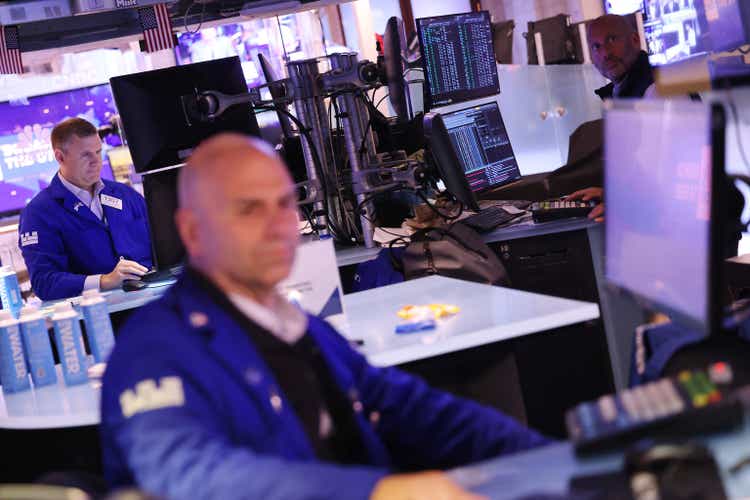
Michael M. Santiago/Getty Images News
Major U.S. stock market averages bounced higher Thursday after better-than-anticipated readings in July retail sales and jobless claims further calmed recession worries.
The S&P 500 (SP500) +1.3%, tipping into wiping out the loss it had endured since the end of July. The Nasdaq Composite (COMP:IND) +1.9%, and the Dow (DJI) +1.2%, led by Cisco (CSCO) and Walmart (WMT). Of the S&P 500’s 11 sectors, nine were higher. Consumer Discretionary (XLY) +3% while Real Estate (XLRE) and Utilities (XLU) slipped.
Stocks popped up after July retail sales rose 1.0% M/M vs. June’s 0.2% slip, aided by strong motor vehicle sales. The headline sales number surpassed economists’ consensus estimates of +0.3%. Also, initial jobless claims for the week ended Aug. 10 fell by 7K to 227K, less than the 236K consensus.
Yields made noticeable advancements as prices fell. The 10-year Treasury yield (US10Y) rose 10 basis points to 3.94% and the 2-year yield (US2Y) rose 14 basis points to 4.11%.
“[Growth] dynamics, not inflation/policy rates, have been in the driver’s seat,” with that message coming from stocks and yields rising and gold moving downward, Liz Young Thomas, head of investment strategy at SoFi, said in a post on X on Thursday. “If interest rates were the primary force, we’d expect stocks to trade lower on ‘hot’ data,” she said.
With traders seeing less of a need for the Federal Reserve to make a deeper rate cut of 50 basis points in September, odds on Thursday climbed to 74.5% that the Fed will cut rates by 25bp, up from 64% on Wednesday.
Meanwhile on Thursday, Wall Street’s major volatility measure (VIX) tumbled -7% to 15.03, a roughly three-week low. Stocks in recent days have been recovering from a selloff prompted by recession worries, largely sparked by the July U.S. payrolls report.
Elsewhere from the economic front Thursday, the Empire State Manufacturing Survey shrank less than expected in August, while the Philly Fed outlook came in at -7.
July industrial production slumped more than expected as data came in at -0.6% M/M versus the -0.1% consensus level. At the same time, manufacturing production came in at -0.3%.
Stocks on Wednesday closed higher after a largely mixed session as July’s in-line consumer-price inflation report set up the Fed to start cutting interest rates in September, but opened the question about how much policymakers will move.
